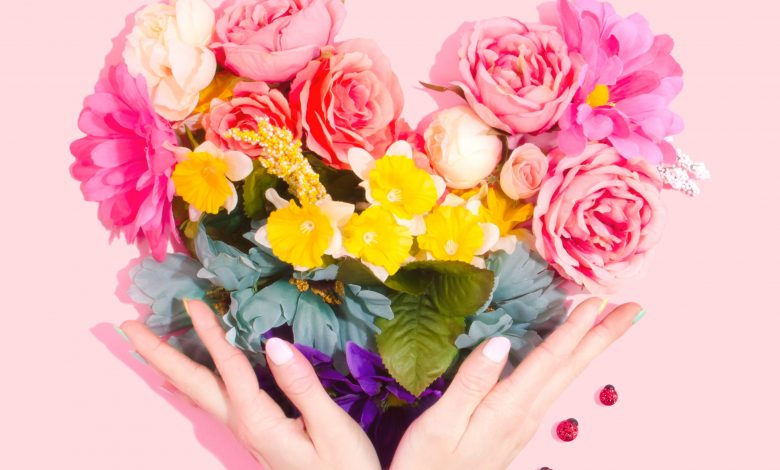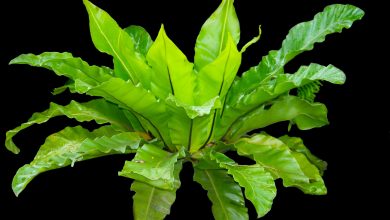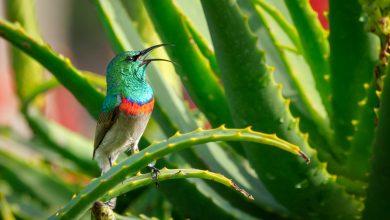Most Beautiful Flowers by Color

A well thought out garden is like a work of art – a natural canvas of greens and blues, purples, and yellows; all colors derived from the beauty of the natural world.
This makes a gardener a painter, someone who uses these colors in ways to convey feeling and create something that they can lose themselves in. By contrasting colors, shapes, directions, and dimensions, a skilled gardener is able to truly extract something special from the flowers they plant.
That’s what this list is dedicated to: helping the would-be natural artists of this world expand their palette of color, by listing off the nicest flowers of each said color.

Red
Red is a classic color associated with flowers. A red rose is perhaps the world’s most widely gifted flower, and for a good reason.
The color is sensual and very visually striking. Its bold nature stands out in a composition of weaker color, so used correctly, it can elevate a garden’s beauty to the next level. Used poorly, and it becomes an overpowering eyesore.
Of course, roses don’t just come in red. You can get them in pink, white, yellow, orange, and more. So you could, in theory, create your own rose garden using just the different types and colors. While this may work for professional rose gardens open to the public, it isn’t your best approach for gardening at home. You want variety and different pieces to look at – not just bushes of the same flower but a different color.
Roses need at least six hours of light per day and a rich, well-drained soil to grow effectively. They also benefit from a natural compost mixed in with their soil.
You need to be watering your roses infrequently, but not so much as to let the soil dry out. Prod it with your finger to ensure that it is still damp. If it isn’t, water again. Make sure you water the soil around the rose and not the flower itself. Otherwise, you risk damaging the petals.
Roses also need regular pruning for them to keep up the best visual appearance, so be sure to stay on top of that as well.
Red is a varied color in the natural world. So you don’t have to go with roses if you don’t like them; you have options. Marigolds, for example, make a great alternative choice. The flower color is still red, although it’s more sunset orange/red, with hints of copper and bronze. You could also go with poppies. This flower, like roses, has a strong red color to it, but it lacks the visual flair that a rose has.

Purple
Purple is similar to red in its dark, sultry tones. Unlike red, instead of evoking feelings of love and dedication, it is more of a passionate color.
It is a rich, deep color that, when used well, can contrast with the pieces around it to add a bit of visual depth to your garden.
For purple, one of your best options are violets. The name says it all really; it’s a violet flower. You can get them in a variety of shades – from light purple, to its namesake, dark violet – so choose at your leisure.
It is more of a dainty flower compared to the extravagance of roses. It’s smaller, with less overall flare, but this just adds to the appeal.
Of course, like most flowers, you are not limited to purple alone when growing violets. Whites, oranges, blues, and more are all on the table, in case you like the flower, but not the color.
Used correctly, violets also have culinary applications. The young leaves are edible, but it is best used as a garnish. You can use the flower to decorate salads, curries, and even some desserts. While you can cook them, the plant tastes quite bland, so stick to using it to spruce up the visuals of your dishes.
Violets have more applications beyond the visual canvas of the garden, and it is a fairly easy flower to grow. The flower requires six to eight hours of sunlight per day and needs its soil to be well-drained. You should also plant it in a potting soil, either one of your own creation or a store-bought one.
You should plant them in early spring to get a summer bloom, after which it has a two-year life span.
You can also grow violets indoors in a pot if you want. You can then transplant them or keep them as a house decoration. Just make sure that the plant still gets the required sunlight.

White
White is perhaps the most important color when it comes to creating an artistically pleasing garden. It is clean, heavenly, and serves as a blank spot in the canvas. This means that you can contrast it really well and use it almost as a form of negative space, creating a slight visual illusion that draws the eye in.
You definitely aren’t stuck for choice when it comes to white flowers. It seems almost every type of flower you can think of comes in some form of white. For this list, however, the number one choice is white tulips.
Tulips aren’t typically a white flower. They come in red, yellow, and purple, as well as a variety of hybrid colors, but none of these are as good looking as the white ones. A field of white tulips is almost divine to engross yourself in, and while you might not be able to plant a whole field of them, you can dedicate a plot to them.
Tulips like a full or afternoon sun, although if you are in a climate that is extremely hot, plant them in a spot that gets morning sun and is then shaded, as the flower doesn’t do well in the heat.
You want a well-drained soil that is fertile and neutral to slightly acidic in pH. If you have alkaline soil, it can’t grow nearly as well.
Tulips can also grow quite tall, so if you do get strong winds make sure to plant them in a spot that has sufficient cover. Otherwise, you lose all of that hard work.
You could also go with dahlias if tulips aren’t your thing. The flower is distinctly different and can create some nice effects. It is more of a round puffy ball, as opposed to the elegant and minimal white top of the tulip.

Green
Green is a strange color when it comes to gardening. It is easily the most prevalent color in nearly anyone’s garden. The grass, trees, shrubbery, and leaves are all green, and yet, people barely pay any mind to the color.
Well, if you’re trying to create a garden that is truly special, you’re going to have to. While you can plant green flowers if you want, the best use of the color is in maintaining your grass and shrubbery.
If you do want to plant a flower, though, a great choice is the green carnation. The flower has a dainty, elegant look about it, and comes in an emerald, almost minty shade of green with white undertones.
It’s not a strong green, so you have to use it tactically; otherwise, you risk it being completely dominated by the strong colors around it. It looks lovely in bouquets, so perhaps consider using it as a table decoration as opposed to a feature of the garden.
Aside from flowers, you need to look after your grass. Make sure that you have decent grass planted, to begin with, and keep on top of maintaining it. Trim it regularly, weed, and don’t let patches die out. That may mean you need to spray it with a bit of water every now and again in the hot months.
The same goes for your shrubbery. Make sure that it compliments your garden and that you keep it neat and tidy. Otherwise, your garden looks like an unorganized mess, and nobody want that.
If you decide to go with the carnations, make sure the flower gets at least five hours of sunlight per day and that the soil is well-drained and has no added mulch.
If you can’t wait until the frost has passed, you can begin growing carnations indoors in potted plants and then transplant the flower afterward, once the outside condition is more favorable.

Yellow
Yellow is the color of joy, laughter, cheeriness, and sunlight. It is a very strong color and can often be too harsh on the eyes if you overuse it. Likewise, it can dominate the rest of your garden if you go crazy with how much you grow and don’t think about where you grow it. For that reason, you need to plan out, in detail, where you want these to go, and what it’s going to go beside.
For yellow, primrose is an incredible choice. You can get it anywhere along the white to yellow spectrum, from pale snow white with yellow undertones, all the way up to golden sunlight. It is a cutesy little flower and looks great once it has bushed out and fully grown. On top of that, the flower symbolizes patience, kindness, and young beauty. So if you really want to take the artistic aspect of your garden to the next level, consider this when planting them.
It is an evergreen flower and can last you a long time, so long as conditions are not too extreme. Its petals are not overly ornate and are quite simple to look at. So while the plant may not be as flashy an attraction as, say, a yellow rose bush, it absolutely still has its place in your garden masterpiece. As with most other flowers, primrose comes in a variety of different colors as well.
As mentioned, primrose is a hardy little plant that can survive harsh winters and still thrive come the spring.
The flower likes a full sun and needs plenty of it every day, so be sure you don’t plant it in the shade. It also likes slightly acidic soil, so once again, don’t plant these in alkaline conditions.
If you decide you don’t want to risk planting them outdoors during the cold months, primrose responds well to being transplanted. So you don’t have to worry about that.
The plant is also not prone to disease. So all you have to watch out for with these are nasty little critters like slugs.
You could also go with something like a yellow dahlia if that suits your fancy, but you can’t really beat primrose for its purpose intended.

Pink
The cousin of red, pink is another symbol of love and romance, although perhaps one that is a bit more youthful and innocent, as opposed to the sultry connotations of red.
It is a light and playful color that can add some much-needed lightness to your garden and can help balance out some of the harsher colors.
There is an absolute plethora of pink flowers to choose from – some natural, others not so much. You have the usual suspects, dahlias, roses, tulips, and so on, but the ones that this list recommends are begonias.
This may be cheating, as this is a genus rather than an individual plant, but nearly all members of the family would make a great choice. In particular, tuberous begonias.
Tuberous begonias resemble roses in the intricacy of the petals and bloomage. Naturally, as this is a genus and not a specific flower, you can get them in a vast array of shades and hues.
The best look of all of these, though, has to be the types that have an almost bleached outlook to them, as if left out in the sun too long. It contrasts wonderfully with the rest of the pink on the flower and, indeed, the rest of the colors in your garden.
The family likes to receive partial sun, so don’t whack them straight in the sunlight. As for soil, you can grow them indoors with a potting mixture, or outdoors in some well-drained soil.
The plant likes to receive a moderate amount of water, so don’t drown them, but don’t let the soil dry up either.
The flowers bloom from spring through fall and symbolize being cautious – a surprisingly serious meaning for some ultimately innocent-looking flowers.
It does come in three types, however: the more common semperflorens, tuberous, and perennials. So make sure you know which you want to plant before you go out buying.

Blue
You can opt for dark or light shades, depending on what you need. Although purple sort of fills in the dark gap, so you are better off shooting light.
Cornflowers are an immediate go-to when you think of blue flowers. The flower has streaks of white running through it, so if you are looking for a solid, bushy blue, perhaps consider something else.
It has a very interesting flowerhead. It is similar to a dahlia or a lotus, except it looks perhaps a bit spikier. This makes it very oriental looking, which can be great when used wisely, but used without a plan, it sticks out like a sore thumb.
It isn’t a bush-based flower; instead, each grows individually on stalks. So it gives you lots of greenage. It can be great to sprinkle in among the rest of your garden, but by itself can struggle to really pop, unless you plant it in large numbers. It symbolizes wealth, prosperity, and friendship.
You can plant the seeds in early spring; the seeds are hardy and resilient, so you don’t have to worry about them. The plant likes full sun and does well in any well-drained garden soil.
If you want to, you can mix some organic fertilizer in with the soil before you plant these if you think it might need that extra little something to push them over the edge.
Due to the flowers hardy nature, it can tolerate drought conditions. Although, it does thrive when watered frequently.
It is susceptible to stem rot and rust, so you need to keep an eye out for those. Although, it’s very unlikely that it catches them.



